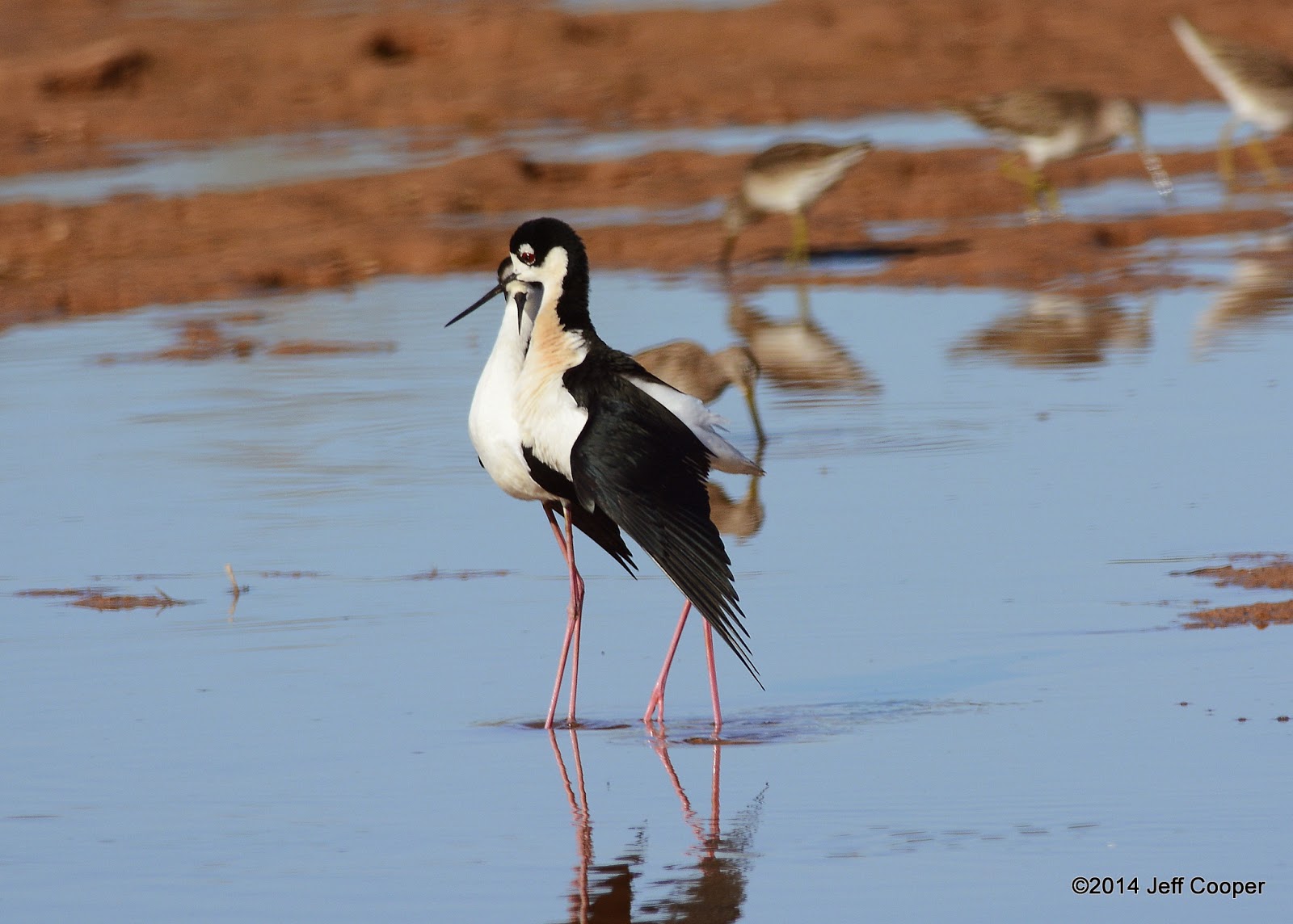Power Road in Gilbert, Arizona is just blocks from my daughter's home. On my second morning of birding during a recent trip to Gilbert it dawned on me that I could take Power Road north to Guadalupe for the
Riparian Preserve at Water Ranch or take Power Road south to Chandler Heights for
Veteran's Oasis Park. In other words, I could "take Power" to some great birding spots. Following Power Road farther north leads to Bush Highway and some of my other favorite birding locations along the Salt River. Going to the green space park in my daughter's neighborhood also produced a few nice bird encounters.
You can read about and see the images of Black-and-white Warbler, Orange-crowned Warbler, Costa's Hummingbird, Peach-faced Lovebirds, and Inca Doves in the posts preceding this one. I'll wrap up the posts covering my recent trip to Gilbert with this one. Here's a potpourri of birds I didn't share in my previous posts.
From the Riparian Preserve at Water Ranch...
 |
| Female Ring-necked Duck Gilbert, AZ |
 |
| Male Verdin Gilbert, AZ |
 |
| Snowy Egret Gilbert, AZ |
 |
| Black-crowned Night Heron Gilbert, AZ |
 |
| Least Sandpiper Gilbert, AZ |
 |
| Long-billed Dowitcher Gilbert, AZ |
This pair of Black-necked Stilts was doing their courting dance when I captured this image.
 |
| Curve-billed Thrasher Showing All Three Eyelids (upper, lower, and the horizontally-oriented nictitating membrane) Gilbert, AZ |
 |
| Neotropic Cormorant Gilbert, AZ |
 |
| Great Egret Gilbert, AZ |
 |
| Northern Mockingbird Gilbert, AZ |
 |
| Male Gila Woodpecker at Sunrise Gilbert, AZ |
From the Park Near My Daughter's Home...
My three-year-old grandson, Graham, and I walked out the front door of his home one afternoon and flushed a Cooper's Hawk from the tree. It landed in a nearby tree so I went back into the house and retrieved my camera. I missed getting an image because it flew as soon as I lifted the lens. However, I soon heard a warbling song and looked in the tree above me to spot my first Townsend's Warbler of the new year.
 |
| Townsend's Warbler Gilbert, AZ |
A Greater Roadrunner passed through the park as Graham and I were about to dig what he called "deep, dark holes" in the sandbox.
 |
| Greater Roadrunner Gilbert, AZ |
 |
| Greater Roadrunner Gilbert, AZ |
I tried and tried to get some images of the nice salmon color beneath the wings of a Northern Flicker in the park, but it was not cooperating. Sometimes hiding behind branches...
 |
| Norther Flicker (red-shafted) Gilbert, AZ |
And sometimes...
 |
| Northern Flicker Gilbert, AZ |
 |
| Female Gila Woodpecker Gilbert, AZ |
From Veteran's Oasis Park...
 |
| Common Gallinule Gilbert, AZ |
 |
| American Coot Gilbert, AZ |
 |
| Anna's Hummingbird Gilbert, AZ |
 |
| Red-winged Blackbird Gilbert, AZ |
A Burrowing Owl in a burrow, of course. These guys are at their burrow nearly every time I visit Veteran's Oasis Park.
 |
| Burrowing Owl Gilbert, AZ |
 |
| Great Egret Gilbert, AZ |
























































